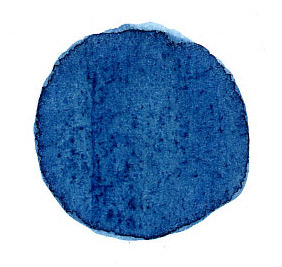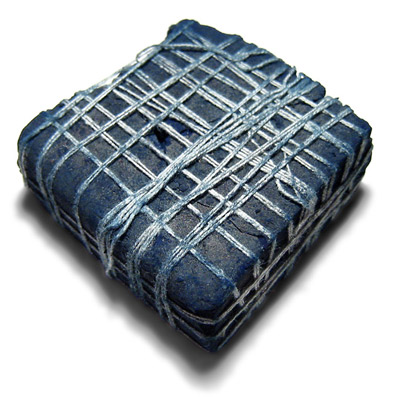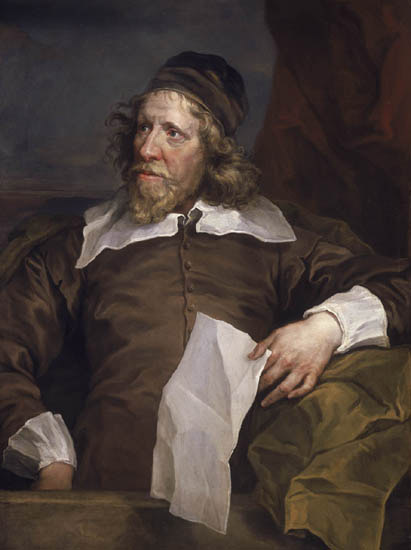« Smalt | Main | Drawing scribbles on the surface again. »
January 29, 2007
Indigo - the Devils Dye
Indigo was a dye from the east which gradually took over from woad as the main source of blue in Europe in the 17th Century. However it didn’t have an easy time.

Originally indigo came from the sea snail Murex Trunculus, which secretes a mucus containing indigotin, which if collected and applied to cloth produces a deep rich blue hue. The Phoenicians were partial to this colour and would farm the sea snails to produce the dye. Considering that it took somewhere in the region of 60,000 snails to make a pound of dye, it wasn’t cheap. As a result rich blue clothes denoted a person of great wealth, and, some say, gave us the phrase blue-blooded.
Then indigotin was found in a plant, not coincidentally named indigofera tinctoria, native of South East Asia. But all was not well, fearing this ready source of blue dye would put the local dye workers - who used woad - out of a job, in 1654 the King of Germany pronounced indigo the Devil’s Colour and outlawed its use. Anyone found dyeing with Indian indigo was liable to get the death penalty.

Indian Indigo, photo: Evan Izer
Anyway, life being the way it is, Indian indigo quickly became the primary source of the dye up until the 20th Century. In fact the availability of indigo increased so much that the costs fell and the dyes ceased to tint royal clothes and ended up as the colour for work clothes. [Economists, I believe, have a lot to say about this sort of thing]
In 1897 the first synthesized indigo was produced by heating phenylglycine-o-carboxylic acid to 200°C with sodium hydroxide which produced a material that readily decarboxylates in air to form indigo. Anything that can readily decarboxylate has got to be worth six quarters of anyone’s money.

Not to be confused with Inigo who was a Jones, didn't come from the sub-continent, wasn't familiar with woad and was the First British Architect, generally responsible for Covent Garden, in London, amongst other things.
Posted by john at January 29, 2007 10:11 AM
Comments
- the 'other things' including the scenery for several spectacular masques by Ben Jonson for court ladies to show off in. Messrs. Jones and Jonson were forever trying to upstage each other, but I expect the ladies attracted more attention than the words and scenery put together - especially as there were only boys in frocks to be seen on every other stage in London at the time.
Posted by: David R at January 29, 2007 02:41 PM